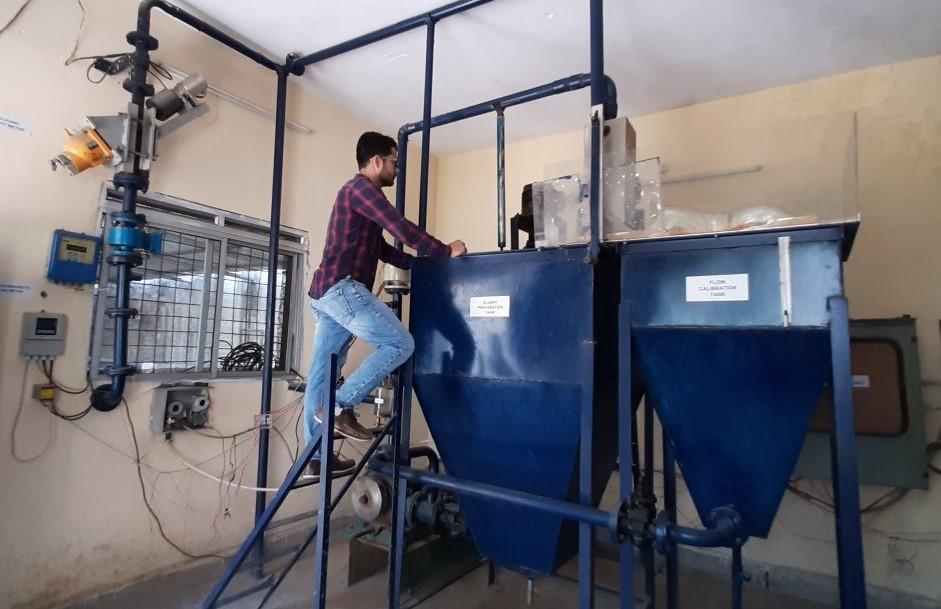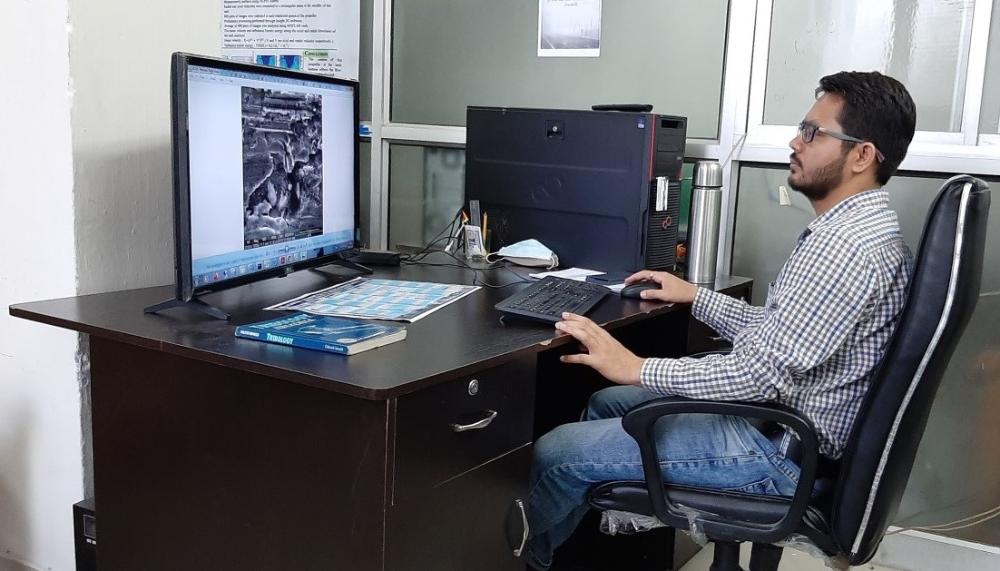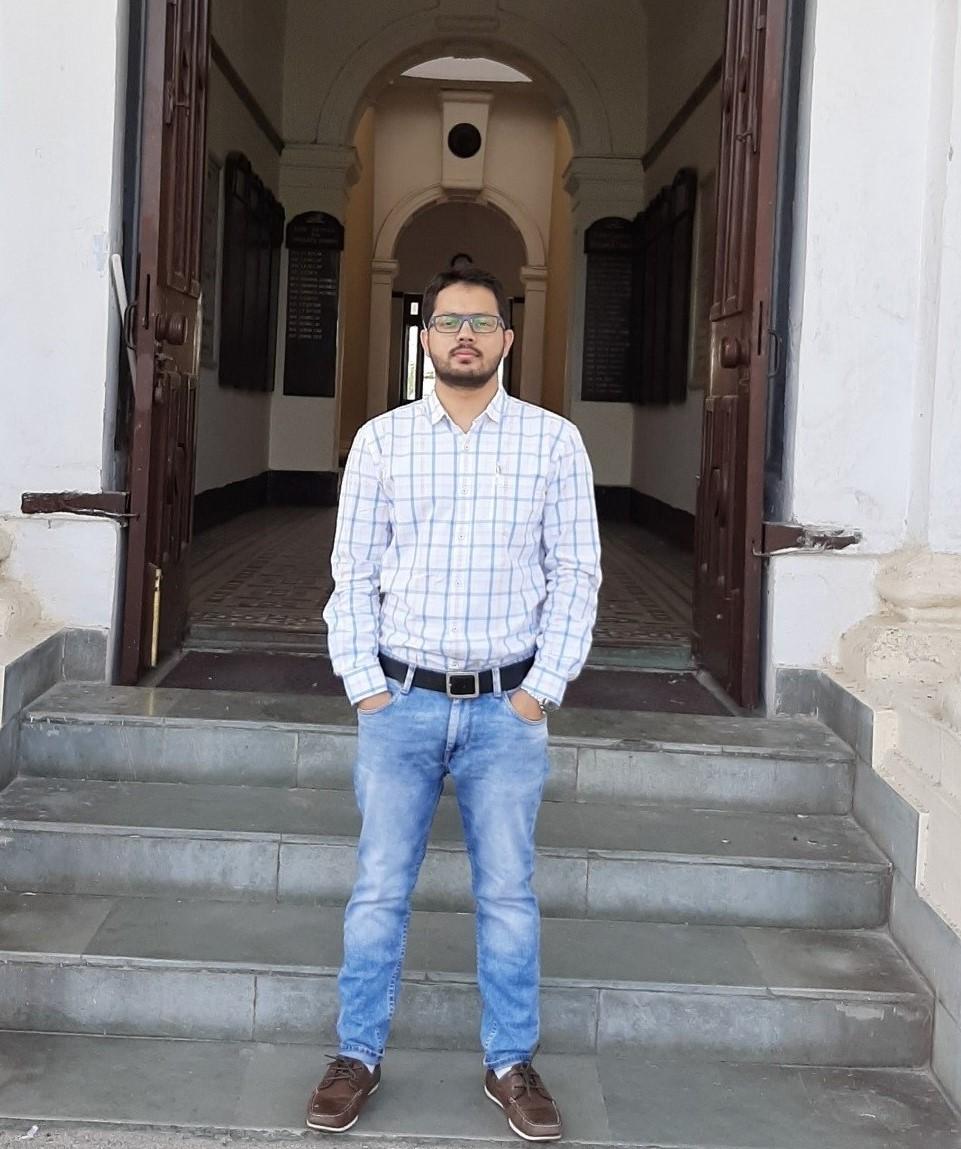Shubham Sharma, IIT Roorkee
"Research on the development of sediment erosion model for turbine material" - Shubham Sharma, Research Scholar, IIT Roorkee
Shubham Sharma is a Research Fellow at Indian Institute of Technology (IIT), Roorkee. IIT Roorkee is one of the three partners of FranSed Project. He has been involved in WP 3 of FranSed Project since the beginning in September 2018.

Journey towards IIT Roorkee from Masters to PhD
Sharma is a mechanical engineer with a Master’s degree in Tribology and maintenance engineering from RGPV University, India. He did his Master's project from Bharat Heavy Electricals Limited (BHEL) Bhopal, India in Hydro turbine engineering department.
" I served as an Assistant Professor in an engineering college after Masters. Later, I joined IIT Roorkee as a Research Fellow. I worked in two different projects at IIT Roorkee sponsored by Hindustan Aeronautical Limited and Council of Scientific and Industrial Research (CSIR) India, respectively. The project sponsored by CSIR aimed for flow field and erosion wear analysis of casing of centrifugal slurry pump. The entire study of this project was related to erosion wear phenomenon inside hydraulic machinery. "
India is the sixth-largest producer of hydropower in the world and it contributes around 4% of the world entire hydropower generation. The rivers, hydropower sources, present in the geographical young mountains like the Himalayas contain high sediment concentration during the rainy season. The abundance of hard suspended sediment causes sediment erosion in hydraulic turbines. This sediment erosion poses challenges for the smooth and efficient operation of hydropower plants (HPPs) as well as for the development of new HPPs.
Investigating the erosive wear performance of turbine material
Sharma is currently investigating the erosive wear performance of turbine material and attempting to scale erosion behaviour of different materials used for verification tests as well as for the construction of prototype turbine under the supervision of Prof. Bhupendra K. Gandhi.
"We are working on developing a sediment erosion model that can be used for the qualitative as well as quantitative estimation of erosion of any rotating and stationary domain using CFD tools."

For FranSed project, the hydroelectric power plant Bhilangana-III located in Uttarakhand, India has been identified for performing the case studies. The petrographic analysis of the Bhilangana river sand showed that it contains 90% quartz. The hardness on Mohs scale of quartz is 7, and of turbine material is around 4-5, which is one of the major reasons for material loss due to erosion in turbines. Moreover, during the monsoon season, the sediment concentration in the Bhilangana river may reach up to 10000-15000 ppm. The safe limit for turbine operation is kept as 2000 ppm. All real influencing parameters and their range are considered for the experimental investigation.
Development of sediment erosion model : WP 3 FranSed Project
An experimental investigation on erosion wear performance of turbine material, i.e. CA6NM at high impact velocities in the range 13-32 m/s have been performed. Micrographic analysis using Scanning electron microscopy (SEM) is also performed to study the basic physics behind the failure of turbine material. Also, the scaling of different materials (soft as well as hard) is completed.
"At present, I am working on developing a mathematical correlation for sediment erosion based on the experimental data. The development of an experimental rig for the measurement of erosion in a rotating domain is also in progress which will be further used for the validation of sediment erosion model in CFD."

Previous studies reveal that the earlier models used for numerical estimation are not appropriate for the quantitative analysis of sediment erosion of turbines. A better prediction of erosion can be obtained by either modifying the constants used in the earlier models or by developing new correlations.
Due to the inappropriate available models, a new sediment model as per the actual parametric conditions of hydropower plants is a novel concept. This concept of erosion model development is yet to be explored, which may be an interesting and a challenging task. A better correlation will help in better assessment of the actual erosion rates and will be helpful in enhancing runner life.
Shubham's PhD journey at IIT Roorkee in his own words
IIT Roorkee is one of the few universities in India which carries out research in the field of challenges faced by hydraulic turbines.
"I feel honoured to be a part of IIT Roorkee which is the second oldest technical institution in Asia. To become a part of the slurry research team at IIT Roorkee is a dream come true for me. I am getting hands-on experience on the measurement and operation procedure on the laboratory test rig and pilot plant test rig which is very exciting for me.

This degree has given me an exceptional opportunity to research on the application of tribology in the field of hydropower. All the hands-on practices of the lab are valuable for my future perspectives as well as for my understanding of the erosion wear phenomenon. Apart from the lab experience, I also get the opportunity to share my research on an international platform like IAHR, FMFP conferences. "
"I am trying to do my best with honesty on learning new things, to discover and to achieve my goals. Furthermore, I am planning to visit Bhilangana-III hydropower plant, case study site, to understand more about the problems that are observed during the actual operation. These will be beneficial in achieving the goals of the FranSed project."
"Other than study, I also got the opportunity to travel to a number of picturesque places in this beautiful Himalayan state of India."
